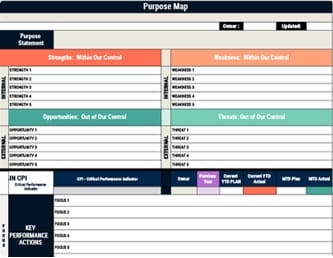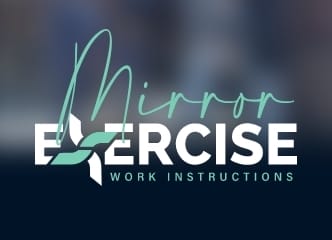Let’s tidy up the chaos of improvement projects by using continuous improvement software that makes lean work scalable, consistent, and visible. You’ll automate routine workflows, align initiatives to strategic goals, and track progress with dashboards that spotlight bottlenecks, saving time and reducing rework. With PDCA baked in, you can standardize experiments, document learnings, and sustain gains across teams. If you want faster cycles, stronger accountability, and reliable ROI, here’s what to contemplate next.
Key Takeaways
- Modern CI software digitizes PDCA, enabling structured planning, execution, checking with centralized data, and acting on lessons for sustained improvements.
- Configurable workflows and visual boards standardize processes, assign ownership, and maintain accountability across cross-functional teams.
- Real-time dashboards and analytics surface KPIs, accelerate decision-making, and provide transparency from frontline teams to leadership.
- Built-in root cause tools (5 Whys, Fishbone) and customer system integrations prevent duplication and target the highest-impact inefficiencies.
- Pilots and governance features—audit trails, notifications, security—validate workflows, ensure compliance, and scale operational excellence enterprise-wide.
Why Digital Continuous Improvement Matters for Lean Operations
Although lean thinking can exist without software, digital continuous improvement makes it practical at scale by tightening feedback loops, standardizing routines, and exposing waste in real time.
You use continuous improvement software to support lean operations by automating workflows, guiding process improvement, and aligning every change with clear business goals.
Real-time collaboration connects frontline teams and leaders, so issues surface quickly and actions don’t stall.
Real-time collaboration unites frontline and leaders, surfacing issues fast and keeping actions moving forward
Visual dashboards and KPI tracking keep progress transparent, enabling data-driven decisions that prioritize the highest-impact work.
Built-in Plan-Do-Check-Act (PDCA) cycles help you test solutions, verify outcomes, and sustain gains.
Core Principles and the PDCA Cycle in Modern CI Tools
When you anchor continuous improvement in the Plan-Do-Check-Act (PDCA) cycle, modern CI tools turn that discipline into a repeatable, team-wide system that’s easy to execute and audit.
You start by planning improvement initiatives with clear problem statements, targets, and owners, then use customizable workflows to guide execution, capture evidence, and maintain accountability across teams.
During Check, continuous improvement tools centralize data, apply performance metrics, and support data-driven decision-making, so you can compare expected and actual results with traceable logic.
In Act, you codify lessons, standardize gains, and queue the next round of process refinement, sustaining momentum toward operational excellence.
Throughout the PDCA cycle, visual boards and shared records reinforce collaboration, while automated notifications and status tracking guarantee timely follow-through and transparent governance.
Essential Features to Evaluate in Continuous Improvement Platforms
Before you shortlist vendors, define the essential capabilities that let a continuous improvement platform translate intent into measurable results, starting with configurable workflows and visual boards that structure initiatives, assign owners, and track status end to end.
You need customizable workflows to enforce structured management, while visual boards keep continuous improvement initiatives transparent and accountable across teams.
- Prioritize real-time analytics and dashboards that surface performance metrics and KPIs for fast, data-driven decision-making.
- Verify root cause analysis tools, such as 5 Whys and Fishbone diagrams, to pinpoint inefficiencies and validate countermeasures.
- Require integration capabilities with customer satisfaction systems to align priorities and prevent duplicate work.
- Guarantee robust PDCA cycle support to plan actions, execute tasks, check results, and adjust quickly.
- Look for audit trails, notifications, and role-based permissions to sustain momentum and governance.
Select platforms that combine measurement, diagnosis, and execution, so improvements stick and scale.
Top Software Solutions Powering Continuous Improvement in 2025
Even as methodologies evolve, the leading continuous improvement platforms of 2025 converge on the same essentials: configurable workflows, collaborative boards, and rigorous measurement that move ideas into results.
Configurable workflows, collaborative boards, and rigorous measurement turn ideas into real, repeatable results
You’ll see continuous improvement software like ITONICS and KaiNexus streamline processes through customizable pipelines, real-time collaboration, and impact tracking that ties improvement initiatives to ROI and accountability.
Ideawake and Planview drive user engagement with challenge campaigns and built-in, advanced analytics that surface high-value ideas and quantify benefits.
Lean Six Sigma support is standard, with templates, Kanban boards, and custom dashboards that visualize KPIs and progress, helping you sustain operational excellence across functions.
KPI Fire, alongside these digital platform leaders, strengthens governance with clear metrics, while robust encryption, role-based access controls, and ISO 27001/SOC 2 compliance protect data and maintain trust.
How to Select and Roll Out the Right CI Software for Your Organization
Although the market offers many capable platforms, selecting and rolling out the right continuous improvement (CI) software starts with a precise problem statement and a clear link to business goals, so you should map current inefficiencies, define target outcomes, and identify the metrics that will prove impact.
Tie requirements to business objectives and operational constraints, then test assumptions early.
- Involve cross-functional stakeholder engagement to surface usability needs and define must-have features.
- Prioritize real-time collaboration, dashboards that help you track progress, and integrations for seamless implementation.
- Score options against areas for improvement, security, scalability, and total cost of ownership.
- Run a pilot program to validate workflows, gather feedback, and refine governance before scaling.
- Provide role-based training and support, reinforce standards, and monitor adoption to sustain continuous improvement software value.
Frequently Asked Questions
Which Tool Is Commonly Used in Continuous Improvement Efforts?
KaiNexus is commonly used in continuous improvement efforts. You’ll use it to support A3 thinking, run PDCA cycles, and track initiatives with real-time collaboration, which helps teams document problems, test countermeasures, and measure results.
If you need broader idea management, you can consider ITONICS for end-to-end workflows, Ideawake for employee idea capture, Planview IdeaPlace for challenge-driven campaigns, or Viima for simple, collaborative boards that visualize progress and prioritize actions.
What Is Operational Excellence Software?
Operational excellence software is a digital platform that helps you streamline processes, reduce waste, and make data-driven decisions across your operations.
You’ll track metrics on customizable dashboards, visualize work with Kanban boards, and manage initiatives using Lean, Six Sigma, or PDCA frameworks.
You integrate customer feedback to align improvements with real needs, then use analytics and real-time reporting to measure results, spot bottlenecks, prioritize projects, and sustain continuous improvement at scale.
What Are the Tools for Continuous Quality Improvement?
The tools for continuous quality improvement include idea management platforms like ITONICS or Ideawake to capture and evaluate employee suggestions.
Kanban boards are used to visualize work and expose bottlenecks.
Root cause analysis templates such as 5 Whys and Fishbone diagrams help diagnose issues.
You’ll also use dashboards for real-time metrics, plus PDCA and Six Sigma frameworks, which tools like KaiNexus support, to structure experiments, standardize wins, and measure outcomes iteratively and consistently.
Is Operational Excellence the Same as Continuous Improvement?
No, operational excellence isn’t the same as continuous improvement.
You should view operational excellence as the broader system that aligns strategy, culture, and processes to deliver superior performance, while continuous improvement supplies the ongoing, incremental changes that fuel it.
You’ll use methods like Lean and Six Sigma to remove waste and optimize workflows, but you’ll also embed governance, customer focus, and accountability so improvements scale beyond teams and persist across the organization.
Conclusion
You’re ready to treat continuous improvement software like a well-tuned compass, guiding every initiative toward measurable gains. Choose tools that align with your goals, support the PDCA cycle, and surface insights through clear dashboards, then standardize workflows so teams act consistently. Start with priority use cases, integrate data sources, and train champions, because disciplined adoption turns features into outcomes. Measure results, iterate configurations, and expand gradually, and you’ll convert scattered efforts into a cohesive, scalable engine for operational excellence.



